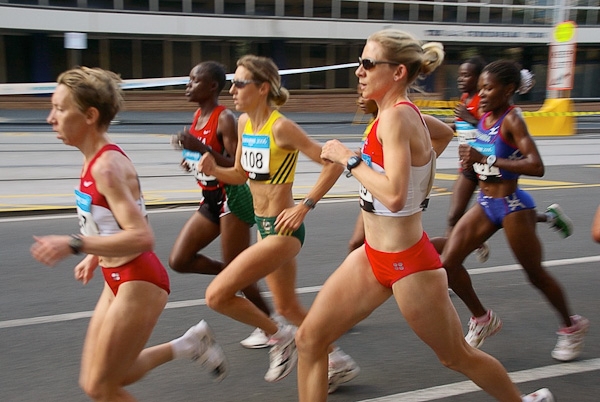Since the onset of Title IX in 1972, opportunities have dramatically increased for female athletes, largely to their benefit. However, some negative health outcomes such as disordered eating, chronic menstrual disturbances and low bone mass have been associated with high-level competition among some female athletes, particularly in sports such as gymnastics and cross-country running, where a slender physique or lean body build is important.
“Adolescent female athletes, in a rapid growth and development phase, may be at greatest risk,” authors Michelle T. Barrack of UCLA and Marta D. Van Loan of the USDA Agriculture Research Service report in the July-September 2011 issue of California Agriculture journal. Their review article is published in a special issue of the journal, “Food as medicine: Can what we eat help cure what ails us?”
The article identifies athletes at risk in order to understand the origin of possible negative outcomes and recommend behavioral modifications that promote participation in competitive sports while supporting lifetime health.
The “Female Athlete Triad syndrome” is a trio of interlinked negative outcomes that can result from poor nutrition in a small percentage of high-level female athletes:
- Low bone mass in young women can lead to the early onset of osteoporosis and increased risked for bone fractures;
- Menstrual disturbances are caused by inadequate reproductive hormones, especially estrogen, which can in turn inhibit bone mineralization during adolescence and impede bone maintenance thereafter;
- Eating disorders can disrupt the menstrual cycle, resulting in low or no estrogen production; adequate levels of estrogen are needed to increase bone mineralization and, in turn, bone density.
An important question is whether these exercise-related health problems occur from an energy deficit, in which calories consumed do not meet calories needed for the increased level of physical activity, or from excess stress that alters the hormones regulating menstrual function and bone metabolism.
“Several well-controlled animal and human experimental studies have confirmed that as long as energy is available for physiological needs other than exercise, it promotes normal hormone function,” Barrack and Van Loan note. “This suggests that intense exercise does not in itself exert an additional stress that disrupts menstruation and bone metabolism.”
The article details the basic nutritional needs of female athletes.
“Just consuming enough energy (calories) is not enough,” Barrack and Van Loan wrote. “For optimal health and peak performance, it is critical to consume the three primary macronutrients for energy metabolism (carbohydrates, protein and fat) as well as a multitude of micronutrients (vitamins and minerals).” Critical micronutrients include B vitamins, antioxidants, calcium and vitamin D, iron, zinc and magnesium.
“The optimal diet for a young, developing athlete should maximize sport performance, while reducing injury risk and facilitating overall health, growth and maturation,” the authors wrote. “Due to the metabolic and physiologic demands of their sports, the nutrient needs of young athletes can be much higher than their nonathlete peers and higher than the needs of young adult athletes who have reached maturity. It is important to make competitive adolescent athletes aware of their specific needs as well as to identify those athletes at risk of developing deficiencies.”
Attached Images:

Disordered eating, chronic menstrual disturbances and low bone mass have been associated with high-level competition among some female athletes. Photo by woowoowoo/Flickr.com